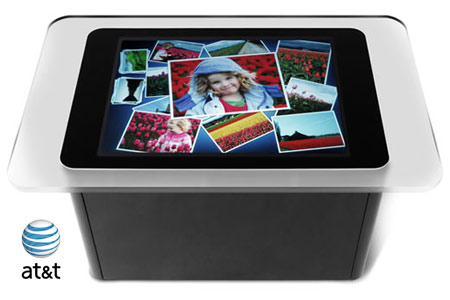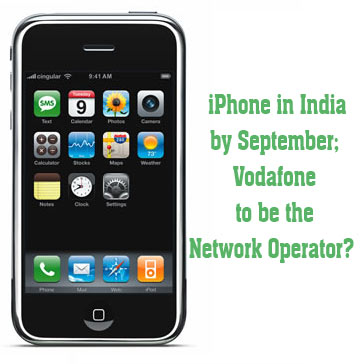
Imagine putting your child to bed and not being able to comfort her with a light in the hall. Imagine trying to help your child after work with his reading and not being able to make out the words on the page for lack of light in the room. In the Western world, a nightlight is nothing more than a source of comfort. Light to read by or to see another’s faces is taken for granted. However, for two billion people around the world, a nightlight is a necessity and the lack of one can be expensive and dangerous. With no other choices other than a kerosene lamp, a candle, or a single-use battery flashlight at their disposal, people in Africa, South America, and the Middle East risk their health and homes while straining their incomes to have access to precious light. And what if they simply cannot afford it? Then they sit in utter darkness.
Mark Bent, a former Marine and oil industry executive, went to Africa and saw the need for a source of light that wouldn’t just last for a few hours nor endanger the people using it. He felt a pull on his heart and said to himself, “I can’t do anything about world hunger; I can’t do anything about racism; I can’t do anything about the wars in Iraq or Afghanistan. But I can do something about lighting.’’
Bent and his corporation, Sunlight Solar, have come out with BoGo Light, a solar powered flashlight that will work for up to twenty years before it will need any parts replaced or repaired. The way the light works is by absorbing the sun’s energy from its solar side panels during the day, which then is converted into light emitting diodes, or LEDs. The LEDs power the light for two days before it needs to be recharged again.
For people who, in the past, have spent up to thirty percent of their income on kerosene for their lamps or up to half of their income on a flashlight that will only last for sixteen hours, these lamps are a godsend that not only provide light that is cheap, but also provide a safe way to add hours to their day without negatively impacting their health or security. One major group who will benefit from the use of BoGo Lights is school-aged children in the developing world. Kids who have spent an entire day in the fields have only a small amount of daylight in which to study before it gets dark. As a result, many of these children cannot learn to read, and therefore may never be able to escape a life of poverty. With just a little light, now they have a chance.
Kerosene lamps are not only costly, they’re also hazardous to the users’ health. According to the World Bank, 780 million people in the developing world, the majority of whom are women and children, are exposed to kerosene lantern fumes equivalent to ingesting two packs of cigarettes a day. More than two-thirds of lung cancer victims in the developing world are female, as women are the primary homemakers. Accidental fires kill or wound hundreds of thousands of families and countless homes are destroyed because of their widespread use. Now people in Angola, Tanzania, Kenya, Ethiopia, South America, Central America, and Haiti are able to have lights in their homes, and Bent has seen the difference this has made in their lives.
“I went to a refugee camp in Ethiopia where they had been using kerosene, and it would take up such a large portion of their incomes,” he said. “It was terrible. Not only for the user, but for the environment too. The BoGo Light has literally changed their lives.” Bent hopes his light will have an impact on people’s lifestyles in the United States as well.
“What we do with single-use flashlights in the United States is just plain stupid. The light industry functions because of planned obsolescence. We buy something knowing that in about fifteen hours, it’s not going to work anymore. The flashlight patent by Eveready Flashlights has not changed since 1984. The light model hasn’t been changed for over a hundred years, and to me, that’s ridiculous.”
According to the Energizer Corporation Website, six billion batteries are manufactured annually worldwide. And with a majority of these batteries being improperly disposed of, it is no wonder the EPA states that “the single largest source of mercury in garbage is household batteries, especially alkaline and button batteries.” Mercury carries the threat of causing brain and kidney damage after long-term exposure.
People who are environmentally conscious immediately see the benefits of owning a BoGo, considering the longevity of the LEDs (they last up to two years) and the shelf-life of its other parts. What Bent really wants people to understand, however, is that when they decide to be a little bit greener with their lifestyle, they’re also helping someone else receive the gift of light. For every BoGo Light bought, SunNight Solar will give an international assistance group like Feed the Children, Samaritan’s Purse or Invisible Children a light to give to someone in need along with the money needed to ship the light.
But the best is yet to come from SunNight.
Next month, the company will introduce a new BoGo model that is completely waterproof and has even more battery life. SunNight is also teaming up with the Rockefeller Group to come up with a bigger, stronger product that will light up an entire room and possibly ward off certain malaria-carrying mosquitoes in residences. For Bent, the ability to give people the chance to feel secure in their homes and give them the gift of light is a calling that lights up his life.
“I was in the oil industry, and I was very highly compensated, but I viewed God leading me this way,” he said. “I just had to do it. I had to make a change.”
For more information, visit the BoGo Light website at
http://www.bogolight.com/. Andrea Verdin is a writer and San Diego native who’s slowly learning more about the changes that need to be made in the world, and is trying every day to make a difference. She can be reached by email at andeys3@gmail.com.
 In the recent months there has been good improvements in Virtual Earth's Birds eye view. One of the reasons this was possible was due to new camera used for these excellent high resolution images - Ultracamx. UltracamX is from a company (Vexcel) Microsoft acquired some time back. It supports very large image format available (216 megapixels: 14,430 pixels across track; 9,420 pixels along track) which means they do fewer flights to capture images. It has something like 13 CCD Arrays, each of them controlled by a dedicated CPU and instance of Windows CE Embedded and a 14th CPU for overall control.
In the recent months there has been good improvements in Virtual Earth's Birds eye view. One of the reasons this was possible was due to new camera used for these excellent high resolution images - Ultracamx. UltracamX is from a company (Vexcel) Microsoft acquired some time back. It supports very large image format available (216 megapixels: 14,430 pixels across track; 9,420 pixels along track) which means they do fewer flights to capture images. It has something like 13 CCD Arrays, each of them controlled by a dedicated CPU and instance of Windows CE Embedded and a 14th CPU for overall control. 









 At AT&T’s Experience Store in San Bruno, the network operator has announced the availability of the latest outstanding innovation in the field of computing, called
At AT&T’s Experience Store in San Bruno, the network operator has announced the availability of the latest outstanding innovation in the field of computing, called 


